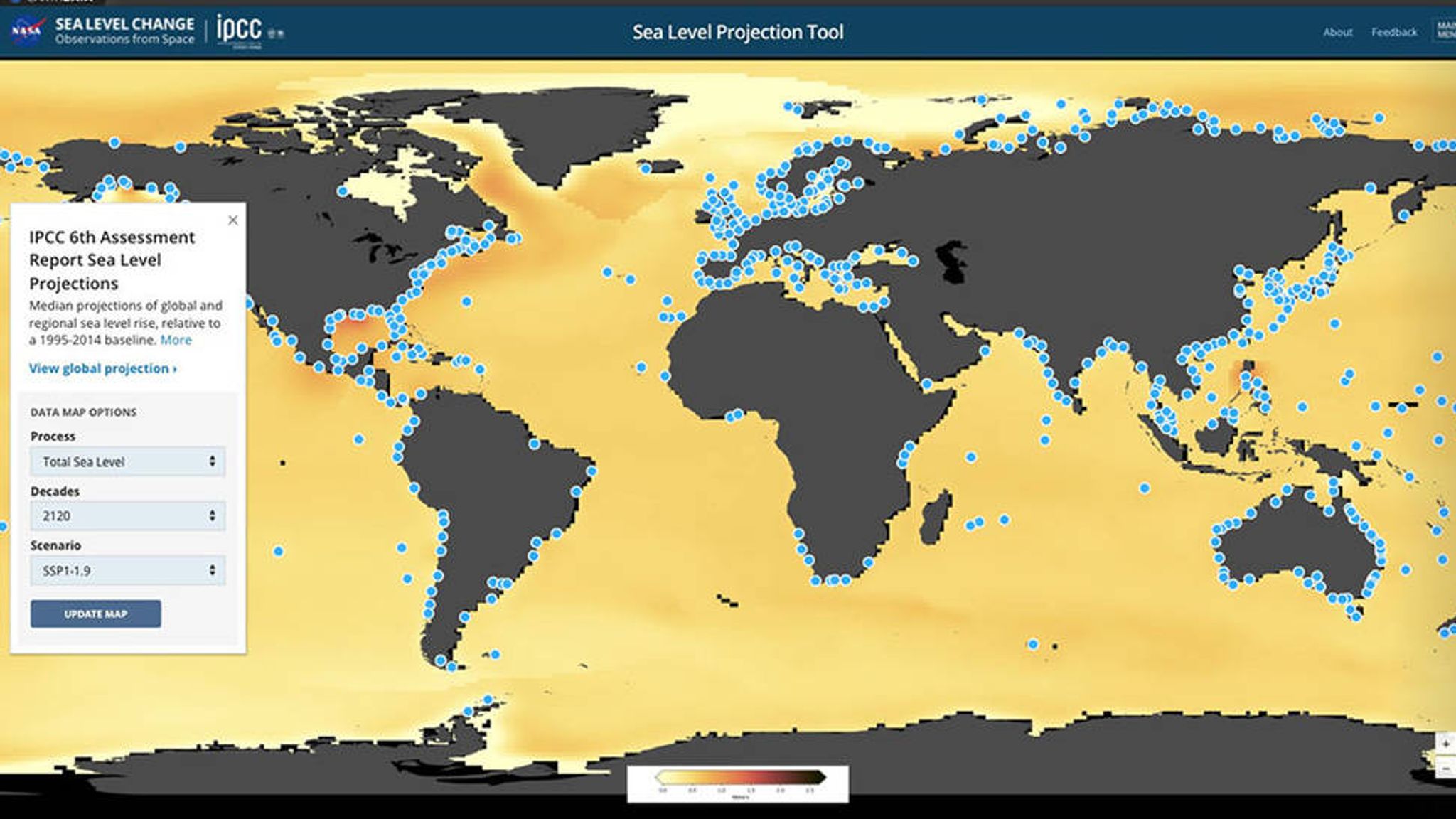

Line graphs of monthly sea level at the Fort Pulaski, GA, tidal station each year from 1935–2021, showing how they compare to the local mean sea level (1983–2001, dashed black line).

You can launch the map in a new browser window. In most places, local sea level is rising, but in a few places it's falling. The color scale on the graphs shows older decades in dark purple and blue. Darker colors mean bigger changes.Ĭlick on an arrow to see a pop-up window that shows an animated gif of monthly sea levels each year throughout a station's period of operation. Brown, downward arrows show where local sea level is falling. Blue, upward arrows show where local sea level is rising. tide-monitoring stations in NOAA's Center for Operational Oceanographic Products and Service (CO-OPS) network. The map above shows local sea level change as a linear long-term trend* at more than 100 of U.S. In some places, for example, coastal land is sinking due to groundwater pumping that causes the ground to slump. At a local scale, the change can be more or less than the global average due to currents, natural climate variability, and things happening on land-like seismic activity, erosion, and subsidence. Global sea level rise is about what's happening to the ocean as a whole. About one third of the increase is due to the thermal expansion of ocean water as it has gotten warmer, and about two-thirds is due to meltwater flowing back to the ocean as glaciers and ice sheets on land melt. For instance, there are floating conference centers, houses, and trees in some major Dutch cities.Global sea level has risen between 6 and 8 inches (15-20 cm) over the last 100 years. While a storm surge barrier the size of two Eiffel Towers protects Rotterdam, the Dutch government has responded with innovations beyond just building walls. More than a quarter of the Netherlands is below sea level, putting it at a high risk for flooding. The Netherlands The Netherlands Climate Central and CREATE Lab But experts caution that building a floodgate on the Yangtze River - one proposed solution - may not help protect the city against sea level rise in the long term. Shanghai has been working on responses to sea level rise for years since flooding poses a threat to its fishing, financial, and tourism industries. Shanghai Shanghai Climate Central and CREATE Lab Sea level rise will contribute to more intense and more frequent hurricanes because the storms will start from a higher level. There are more residents living in high-risk flood zones in New York City than in any other U.S. New York City Climate Central and CREATE Lab Here are three other places where familiar coastlines are likely to be reshaped by rising seas. The risks to coastal areas in the state are exacerbated by the continuing erosion of the seafloor off Florida’s coasts. Flooding could destroy Florida’s coral reefs, mangrove swamps, and beaches. Of the top 25 American cities most vulnerable to coastal flooding, 22 are in Florida (see gif at top). In the U.S., New York City, Charleston, and several cities in Florida are among the metropolitan areas where the effects of rising seas are expected to be especially dramatic. EarthTime spotlights the effects of rising seas on major urban areas including Mumbai and London, but risks are even greater for islands like Tahiti, Tuvalu, and Kiribati.


 0 kommentar(er)
0 kommentar(er)
